Snapshot of LGBTQ2S+ workers
In 2018, 677 people, 408 from Sudbury and 269 from Windsor, completed an e-survey about their experiences at work and in the community.
The age of survey participants ranged from 16 to 69, and young people were particularly well represented (54.9% of participants under the age of 30). 14.5% of the sample identified as racialized non-white, and 12.6% identified as Indigenous.
Regional breakdown
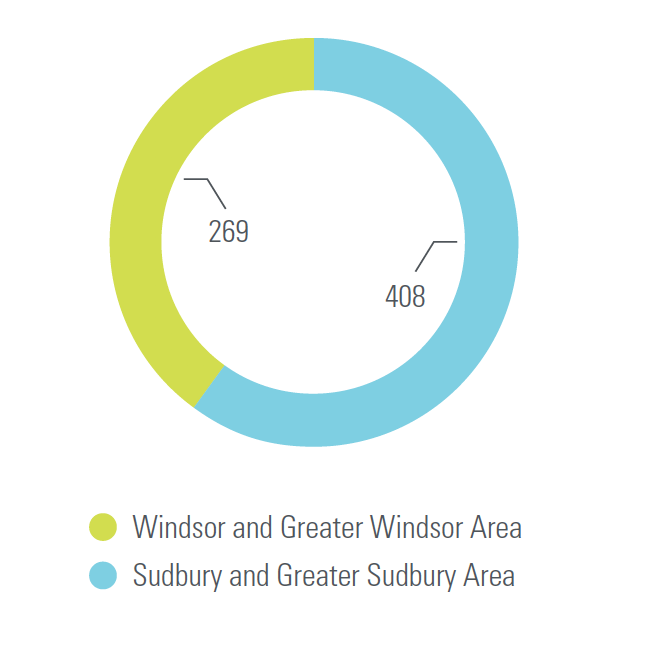
Gender identity
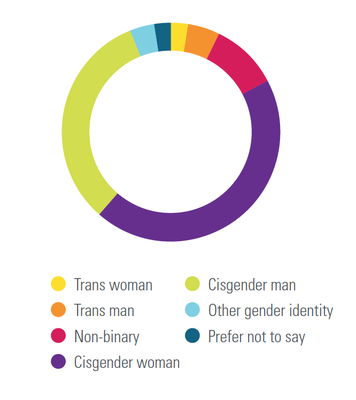
Sexual orientation
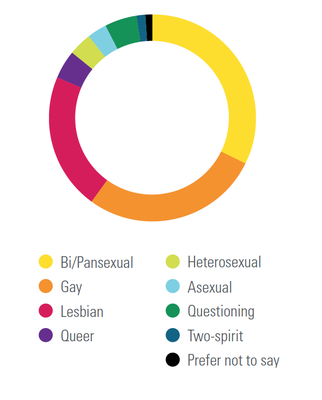
LGBTQ2S+ spaces and comfort
Although nearly half of participants reported being ‘out’ in most areas of their social lives, participants who were racialized as non-white reported much lower rates of being out in the community, with only 24.1% out in all or most settings.
Additionally, while LGBTQ2S+ spaces are important areas for developing community, not everyone reported feeling comfortable in these environments. In addition to regional differences, Indigenous and racialized people reported feeling less comfortable than those who identified as white, and only 59.82% of all participants felt comfortable all or most of the time—highlighting the need for broader inclusivity.
Where are you ‘out’ in the community? (total sample)
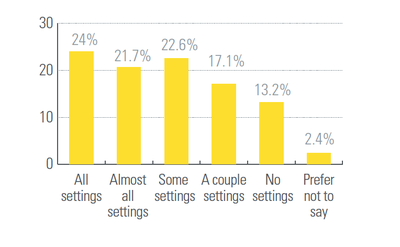
Percent of people who reported rarely or never feeling comfortable in LGBTQ2S+ spaces
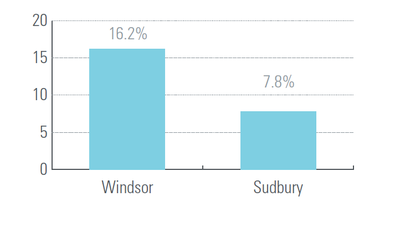
Rates of discrimination from co-workers
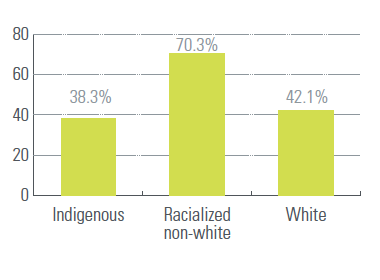
People reported high rates of discrimination from other employees, with racialized workers, as well as non-binary, and transgender people, reporting higher rates than white people and cis-gendered people, respectively.
Rates of job-leaving due to negative workplace for LGBTQ2S+ workers
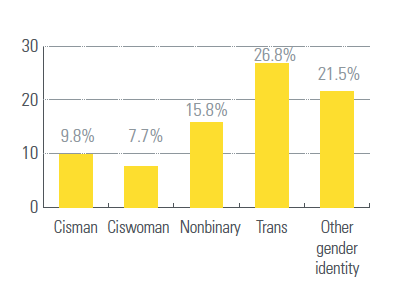
Workers also left jobs due to racist and unsupportive environments at work. Indeed, 22.22% of racialized respondents reported leaving work due to racism, and 26.83% of transgender respondents reported leaving a job because it was not a positive environment for LGBTQ2S+ employees.
How often do you change your appearance at work?
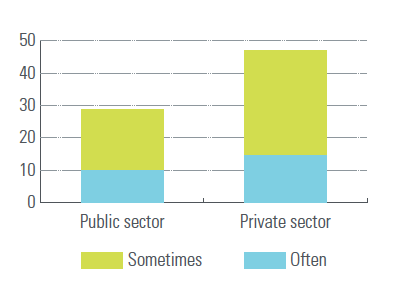
What is more, nearly half of workers in the private sector and over a quarter of workers in the public sector reported changing their appearance, dress, mannerisms, or behaviour at work to ‘fit in’. 38.6% of survey participants were members of a union. Indigenous people were less likely to be unionized than other respondents.
Who are you ‘out’ to at work?
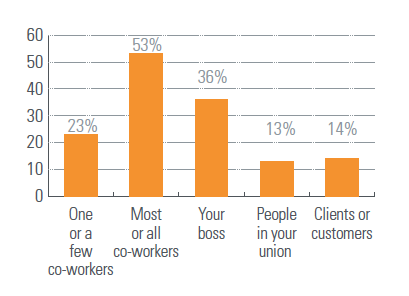
Rates of being ‘out’ at work were similar for both regions. Most workers were not out to their boss or supervisor.
Percent of participants who are out to their union
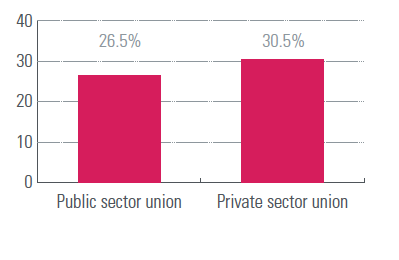
Only 28.28% of union members were out to people in their union—such as stewards or staff—a number that was higher for private sector workers.
Do you feel that your union protects you from discrimination based on sexuality of gender identity?
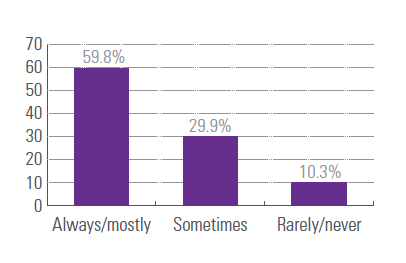
Of union members with an opinion, 59.79% said that the union mostly or completely protected them from discrimination, although only 47% said they would go to their union if they were experiencing discrimination at work.
What mental health issue(s) do/did you have over the past year?

How often did you have a mental health issue related to your work or workplace over the past year?
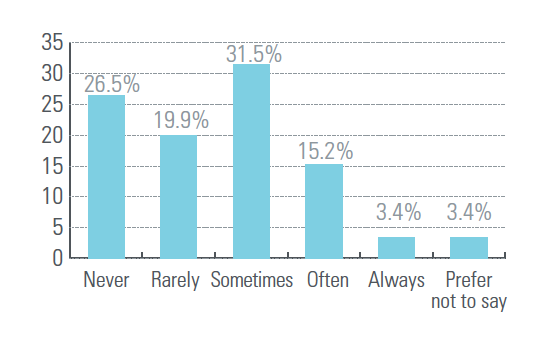
How would you rate your mental health? Union and non-union workers

Percent reporting using the following substances to cope with work
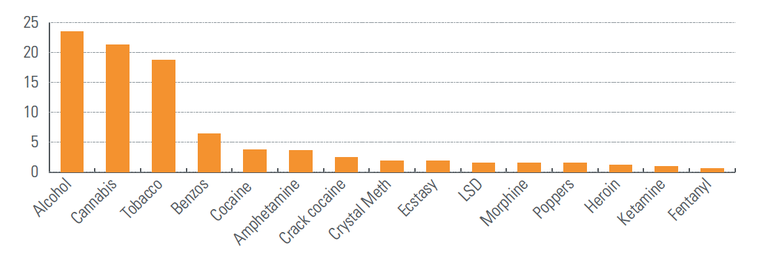
People were more likely to use substances if their workplace did not support their gender identity or sexuality.
Substances that were significantly more likely to be used by those in unsupportive workplaces.
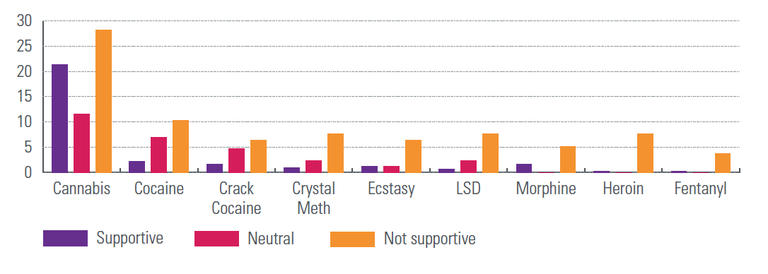

The Brewer Lofts, brewery redevelopment graffiti/streetart, Sudbury, Ontario.